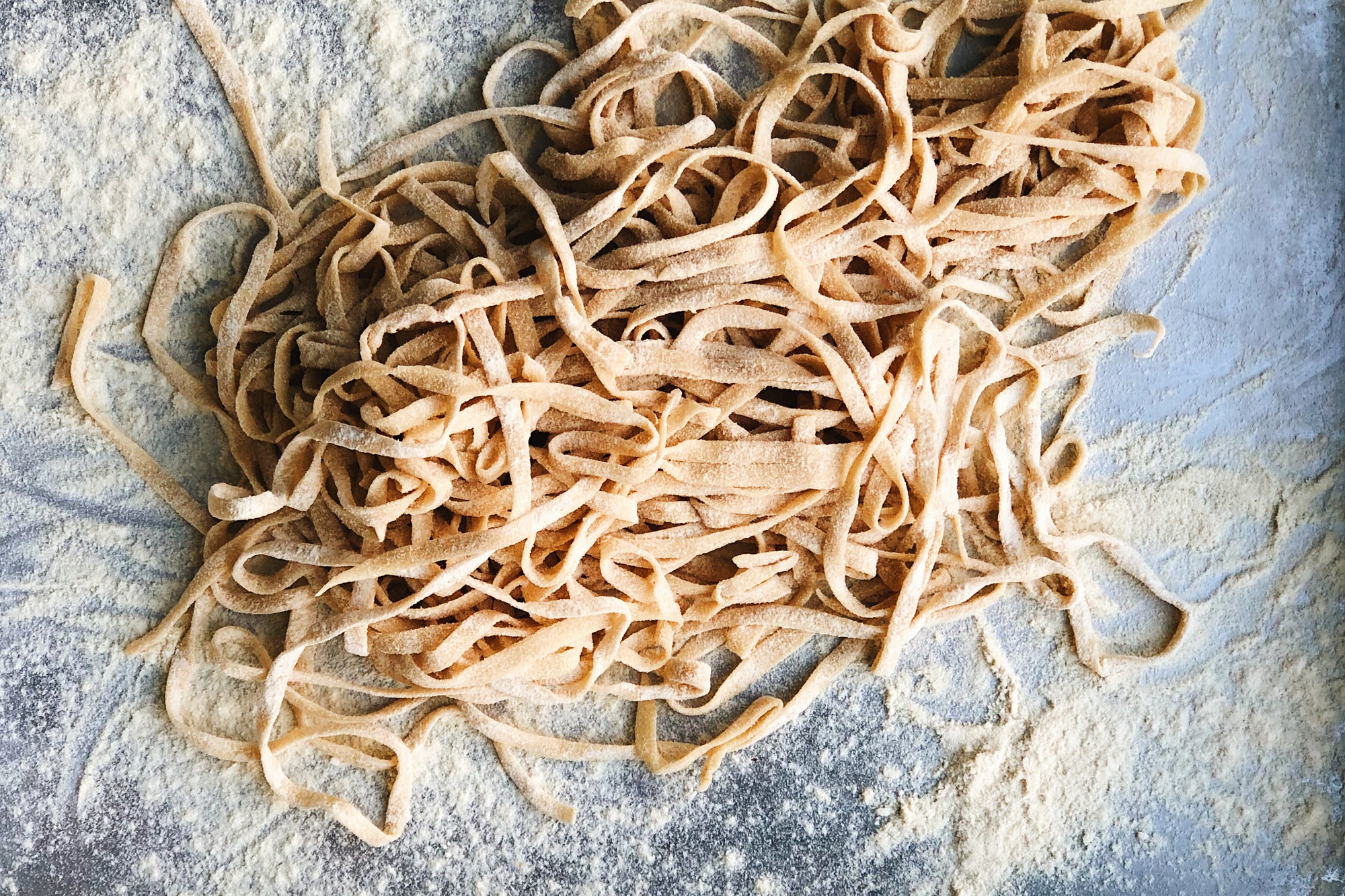A few months back, we hosted a friendly Pasta Battle in collaboration with our friends at Caffe La Tana here in Vancouver. One of our Pasta Battlers Sterling Hein has generously shared his beginner's pasta recipe with us. We tested it with Sifted Red Fife Flour, but feel free to experiment with our Durum '00' Flour and our Sifted Red Spring Wheat Flour too.
Basic Fresh Pasta
100g Sifted Red Fife Flour
1 large egg
Every 100g of flour serves one person, so increase your amounts accordingly. If possible, use eggs with a high omega content, which have a more orange coloured yolk. This gives your pasta a rich yellow colour that is more pleasing to the eye.
Mix the flour and eggs in the bowl of a stand mixer with your hands until a shaggy dough forms. Knead with the dough hook until the dough is smooth and elastic, about 10 minutes. Cover the dough with plastic wrap and let rest at least 30 minutes.
Cut and roll as desired.
Do Ahead
The dough can be made 1 day ahead; tightly wrap and chill.
Sterling's tips for making pasta
1. If you have a food processor, bring your dough together by mixing it in the processor. With a food processor, there is no need for wells of flour and long stirring sessions on your kitchen counter. The food processor quickly and evenly mixes and distributes moisture throughout your flour. If you don’t have a food processor or don’t want to have to wash yours after use, then you can measure and mix the dough in a single mixing bowl, using a fork. Stir and mash it around vigorously.
2. Never rest your dough in the fridge, unless you’re not rolling it out for 5 or more hours. Kneading the dough forms a gluten network, which tightens as you knead, making it springy. Sort of like a muscle, cold temperatures will further tighten the gluten. To be able to roll your dough, that gluten needs to be relaxed. All that is required for resting is at least 30 minutes of resting on the counter, at room temperature. This also gives the flour proteins enough time to fully absorb the liquid. If you rest the dough in the fridge, allow an hour or more of rest time at room temperature to relax to the pliability you need to roll it.
3. The best way to evenly introduce salt into your dough is by aggressively salting your pasta water, so that your pasta absorbs it as it cooks. It should taste like your memory of the sea (to quote Samin Nosrat), or like a mermaid’s nipple (to quote Linda Nicholson Miller). Usually, almost a quarter cup of salt goes into the water to get it to that stage. It looks like a lot, but keep in mind that most of that salt stays in the water and is thrown away.



Comments
I just made this using Flourist Durum ‘00’ – I tripled it, because pappardelle. I found it wouldn’t come together without a few tbsps of water. I used my KitchenAid Stand Mixer and hand rolled the sheets out, rolled and cut them in strips. Tasted absolutely wonderful! Can’t wait to experiment with a few other flours. Thanks for the guide!
Thanks so much for putting this recipe up! I am a confident pasta maker with a typical all purpose flour- but the one time I tried to make a pasta with fresh ground flour it was gritty and more chewy than I would like. I realize now I need to sift my ground flour (I have just dipped my toe into home milling- so much to learn) but is there any special cooking times/instructions for whole grain pasta? I want to love it so bad!